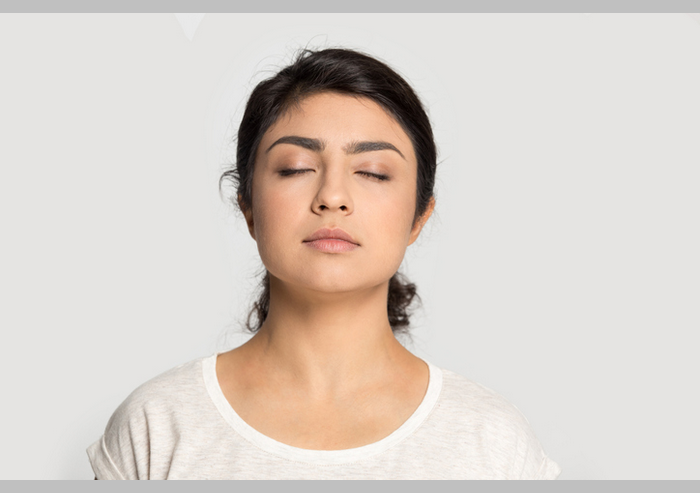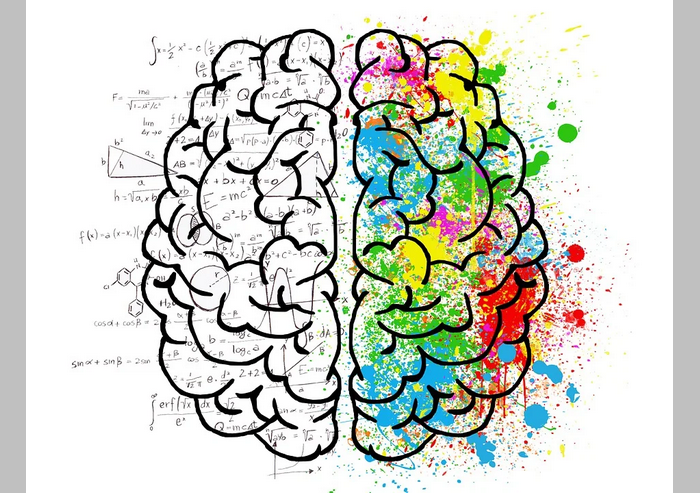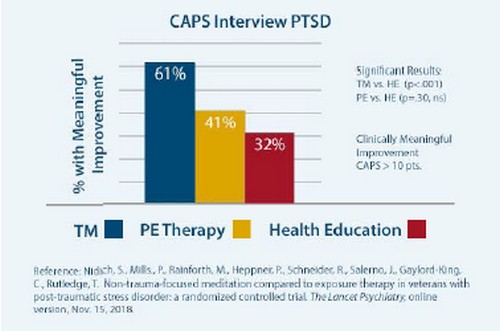
The answer is yes!
Since 1970, six hundred research studies have appeared in scholarly publications, showing the beneficial effects of TM on the mind, body, and spirit. Almost 500 of those studies are peer-reviewed, including long term random control studies and meta analysis, which are the gold standard of research. This level of hard date is unique to the TM technique as competed to other meditation techniques.
Research shows that TM improves:
Research also shows that TM decreases:

Reference: wallace, robert keith, benson, herbert. the physiology of meditation. scientific American, Vol. 226, p 84-91, 1972
It all started in 1970
The first research on TM was conducted by Dr. Robert Keith Wallace in 1970, when he was a PhD student at the University of California. Dr. Wallace’s research found that TM produces a unique style of physiological functioning, a 4th state of consciousness, different from the ordinary states of waking, dreaming or sleeping.
A unique state of physiology
Wallace found that during TM, oxygen consumption and heart rate decreased and skin resistance increased, indicating a very deep state of rest. But while the body was gaining deep rest, the electroencephalogram (EEG) showed that the mind remained awake and alert.
This unique style of functioning is referred to as a state of restful alertness, where the body achieves a deep level of rest within just a few minutes, while the mind maintains a highly alert, wakeful state.
The repeated experience of restful alertness during TM lies at the basis of all the benefits brought about by TM. The deep rest of meditation triggers the body’s self-repair mechanism, allowing the physiology to heal, balance and repair itself, resulting in the wide variety of health outcomes mentioned in the first slide.
One more discovery
Previously, meditation practice was thought to be difficult, with results coming only after years, even decades, of rigorous practice.
One surprising discovery of Dr. Wallace’s study is that the state of restful alertness is achieved easily and quickly. Right from the start, practitioners experienced a deep state of rest and the benefits that brings.

Click here to read the full article the Scientific American article.

Reference: Eppley K, Abrams A, Shear J. Differential effects of relaxation techniques on trait anxiety: a meta-analysis. Journal of Clinical Psychology 1989 45(6):957-974
What is a meta-analysis?
A meta-analysis is a statistical tool that combines the results of multiple scientific studies. Meta-analyses can be used when there are multiple scientific studies addressing the same question, with each individual study reporting measurements that are expected to have some degree of error. The aim is to derive a pooled estimate, to give a more accurate result. Meta-analytic results are considered the most trustworthy source of evidence.
The setup
This meta-analysis, conducted at Stanford University in California, looked at 146 separate studies on the effectiveness of all relaxation techniques that had published research and compared the effectiveness of those technologies to the effectiveness of TM.
This list of 146 studies included comparing TM to mantra meditation, biofeedback, progressive muscle relaxation, mindfulness, relaxation response, and many other meditation and relaxation techniques.
The results
TM was found to be more than twice as effective as any other technique in reducing anxiety. In addition, not one of the other techniques significantly reduced anxiety, in comparison to a placebo.
The subject populations included in the study were children, high school students, college students, adults, psychiatric or drug abuse patients, adult prisoners, juvenile offenders, and the elderly.

Click here to see an abstract of the study.

Reference: Travis F, et al. Effects of Transcendental Meditation Practice on brain functioning and stress reactivity in college students. international journal of psychophysiology 2009 71(2):170-176
Neuroscientist Dr. Fred Travis is the Director of the Center for Brain, Consciousness, and Cognition at Maharishi International University. He is a leading expert on brain functioning during higher stages of human development and has authored over 60 papers on brain development.
A look at brain wave integration
In 2009, Dr. Travis was the lead author of a published study that looked at the effect of TM on brain wave integration in students at American University in Washington, DC. Students are often under tremendous pressure and stress to succeed in their course work. Additionally, they often deprive themselves of sleep, making it harder for the brain to work. TM was tested here to see what difference it could make in a high-stress setting.
Brain wave integration measures the coordination and synchronization of brain waves across the whole brain. Integration is associated with higher grade point average, increased creativity, concept learning, moral reasoning, and improved overall brain function.
The set-up
Dr. Travis and his fellow researchers administered a pre-test to all the students before training the TM group. Then they administered a post-test three months after beginning TM practice. The students did the post-test during their most stressful time, exam week. The pre- and post-test involved measuring brain waves across the whole brain.
The results
The findings revealed a significant increase in brain wave integration in the TM group after three months of meditation, compared to the control group, which showed a slight three-month decline.

Click here to read the full article.

Reference: R. H Schneider et al.. Stress Reduction in the Secondary Prevention of Cardiovascular Disease. Circulation: Cardiovascular Quality and Outcomes. 2012 Nov;5(6):750-8.
The first government-funded study on meditation
In 1988, internationally-recognized physician, Dr. Robert Schneider, received the first grant awarded by the US National Institutes of Health to study the effects of meditation. Over a 30-year period, Dr. Schneider received $25 million in grant support from the National Institutes of Health and other government agencies for clinical research on mind-body medicine, ageing, and cardiovascular disease. The results of these studies have been published in 150 peer-reviewed articles.
In 2012, Dr. Schneider was the lead author of a study that appeared in the journal Circulation: Cardiovascular Quality Outcomes. That study examined TM’s effects on cardiovascular disease, including heart attack and stroke.
The set-up
The researchers designed a randomized, controlled trial that looked at the impact of TM over five years on 201 African-American women and men with coronary heart disease. This study was done within the African-American community due to their high rate of heart disease.
The subjects were randomly divided into two groups: those who learned TM and those who participated in a health education program.
The results
Specifically, the study looked at the effect of TM on myocardial infarction, stroke and all-cause mortality. After five years, the TM group showed a 48% lower rate of heart disease than the health education group.
 Chart showing that the TM group had a 48% lower risk of heart attack and stroke than the group who received health education.
Chart showing that the TM group had a 48% lower risk of heart attack and stroke than the group who received health education.
Click here to read the whole article.

Reference: Nidich, S., et al. Non-trauma-focused meditation versus exposure therapy in veterans with post-traumatic stress disorder: a randomized controlled trial. Lancet Psychiatry, November 15, 2018.
Post-traumatic stress disorder, which affects 10% of Canadian Veterans and 6% of the general population of Canada, is a complex disorder and difficult to treat.
Prolonged exposure therapy
One standard therapy for PTSD is prolonged exposure therapy, a psychological treatment that helps people confront their fears. The treatment involves a psychologist, in a controlled setting, “exposing” individuals to the things they fear and avoid.
This form of therapy can be effective but is very difficult, as it requires patients to relive their most traumatic experiences. The TM technique, on the other hand, through the deep rest it provides, releases traumatic stress without having to relive it.
The set-up
In 2018, Dr. Sandy Nidich, a researcher with decades of experience designing and executing studies of this kind, led a study that compared the effectiveness TM to exposure therapy. Funded by the US Department of Defence, the study involved 203 Veterans with a current diagnosis of PTSD as a result of military service. The Veterans were randomly assigned to one of three groups: a group that learned TM, a group that received exposure therapy, and a third group that received health education.
The research compared the non-trauma-focused practice of Transcendental Meditation with Prolonged Exposure Therapy and compared both therapies with a control of PTSD health education.
The results
The researchers found TM to be very effective, compared to the other treatment modalities: 61% of those receiving TM showed clinically-significant improvement, compared with 42% improvement in those receiving exposure therapy, and 32% improvement in those receiving health education. Given the results and the ease with which TM can be learned and practised, the authors concluded that TM can be a useful treatment modality for PTSD.
The TM program is now being offered to Veterans in Canada through funding from Veterans Affairs Canada. The results continue to be highly significant.

Click here to read the full article.
Click here to learn more about how TM is being offered to Veterans in Canada.
